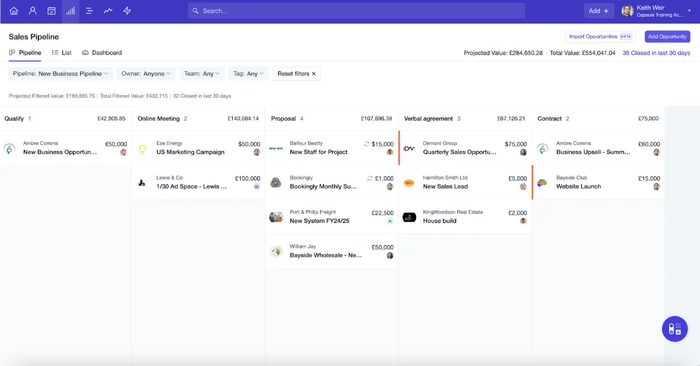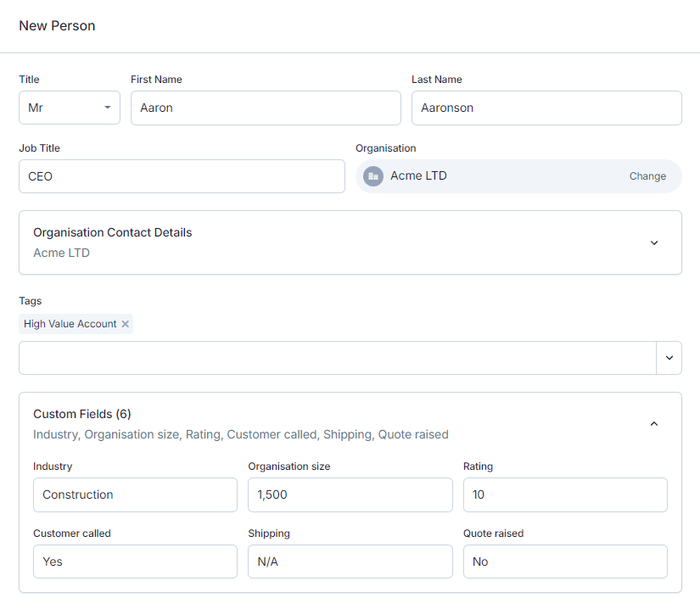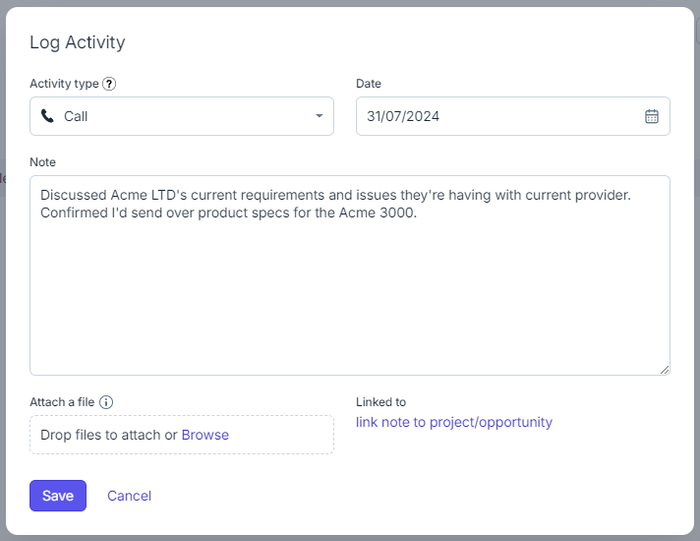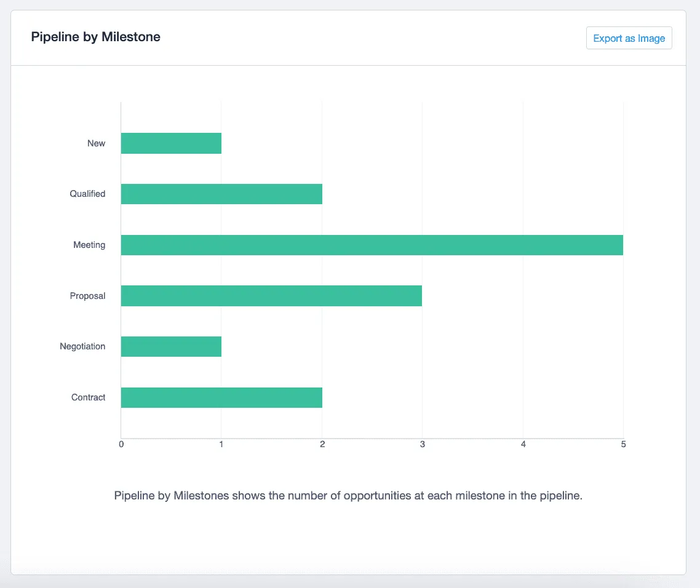Are you finding it difficult to keep track of your leads as they move through the sales funnel? Without a clear lead management system, prospective customers can slip through the cracks, resulting in lost opportunities and wasted efforts.
A well-implemented customer relationship management (CRM) system streamlines your lead management process, ensuring every lead is tracked, nurtured, and converted efficiently.
In this article, we’ll look at how to best use a CRM for lead management, along with how to resolve common challenges and setting up your CRM for maximum effectiveness.
Top lead management challenges (and how your CRM can solve them)
As a core component of your sales process, your lead management needs to be as effective as possible. However, there are plenty of challenges that could hurt your efforts. Here are some of the more common lead management challenges you might face, along with their CRM-based solutions.
Identifying the right leads
The challenge: Consistently identifying and prioritizing high-quality leads
The solution: Implementing a standardized lead scoring system within your CRM
There are plenty of potential leads out there — the trouble is finding the right ones for your business. Many sales teams struggle with consistently qualifying leads, often relying on subjective assessments that vary across the team. This inconsistency can result in missed opportunities, wasted resources, and added friction between marketing and sales teams.
Implementing a lead scoring system in your CRM creates a standardized method for evaluating lead quality. This system can take into account various factors such as demographic information, engagement level, and behavioral data.
With a CRM like Capsule, you can use Tags and Custom Fields to assign points based on specific actions or characteristics. This ensures that every lead is evaluated consistently, allowing your team to focus on the most promising prospects and improve overall conversion rates.
Tracking lead interactions across multiple channels
The challenge: Losing valuable context and missing follow-up opportunities due to scattered interaction data
The solution: Centralizing all lead interactions within your CRM
Leads might choose to interact with your brand through a variety of touchpoints — emails, social media, website visits, phone calls, and more. Without a centralized system, it’s easy to lose track of these interactions, leading to broken communication and missed opportunities.
A well-configured CRM acts as a single source of truth for all lead interactions. For example, Capsule makes it easy to log all of your communication and other interactions on the contact record. You can connect your CRM to your email and other channels for a complete history of each lead’s interactions in one place.
Having a comprehensive view enables your team to provide more personalized and timely follow-ups, increasing the chances of moving leads through the sales funnel successfully.
Ineffective lead nurturing strategies
The challenge: Failing to engage and guide leads effectively through the buyer’s journey
The solution: Creating personalized, automated nurturing workflows in your CRM
Many businesses struggle with nurturing leads effectively, often sending generic, poorly timed communications that fail to resonate with prospects. This can result in leads going cold or choosing competitors who take the time to address their specific needs and pain points.
Modern CRMs offer powerful tools for creating personalized nurturing workflows. For instance, by using Capsule and Transpond together, you can set up automated email marketing sequences triggered by specific lead actions or characteristics.
By fully leveraging your CRM’s capabilities, each lead will receive relevant messaging, increasing engagement and improving conversion rates throughout the sales process.
Best practices for lead management with your CRM
CRM software provides a solid foundation for all your lead management activities but, with the right strategies in place, it can become so much more. Here are the CRM best practices to take your lead management to the next level.
Properly structure your pipeline

A well-structured pipeline is the backbone of efficient lead management. However, many organizations create too many milestones, basing them on the number of interactions rather than key stages in the sales process. This can lead to confusion and inefficiency in lead management.
Define clear, distinct stages that represent significant milestones in your sales process. For example, Capsule’s default pipeline stages are:
- New
- Qualified
- Meeting
- Proposal
- Negotiation
- Contract.
Each stage represents a meaningful progression in the buyer’s journey, not just a series of interactions. Getting a lead from proposal to negotiation may take multiple calls and emails, but it’s still just one stage in the pipeline.
That doesn’t mean you should leave those interactions to chance. Create tasks or activities to complete within each stage before moving to the next milestone. Capsule’s Tracks feature allows you to create templated task lists for each stage, ensuring leads consistently get the attention they need.
Create personalized lead nurturing journeys
Effective lead nurturing is about delivering the right message to the right lead at the right time. Modern CRMs like Capsule offer powerful tools to create personalized nurturing journeys that guide leads through the sales funnel.
Use your CRM to segment your leads based on criteria such as industry, company size or specific pain points. You can then create targeted content for each segment and stage of the buyer’s journey, triggered by specific actions or characteristics.
For example, with Capsule’s Growth plan and above, you can create workflow automations to schedule follow-up tasks or trigger internal notifications based on lead behavior. This ensures each lead receives relevant, timely communication, increasing engagement and improving conversion rates throughout the sales process.
Establish a clear process for lead handoff between teams
Transitioning leads from marketing to sales is a critical juncture that can make or break your lead generation. A clear, well-defined handoff process ensures that no leads fall through the cracks and that sales teams have the context needed to engage effectively.
To implement an effective lead handoff process, define clear criteria for sales-ready leads, agreed upon by both marketing and sales teams. For example, you might establish that a lead is considered sales-ready once they have completed one or more actions, such as downloading a key resource, attending a webinar, or requesting a product demo.
All relevant lead information and interaction history should be easily accessible to the sales team within your CRM, so they can quickly understand the lead’s needs and tailor their approach accordingly. By establishing a clear handoff process, you improve collaboration between marketing and sales, ensure faster follow-up on qualified leads, and increase the likelihood of successful conversions.
Setting up your CRM for better lead management
Hopefully, by now it’s clear that using a CRM for lead management is essential. Here’s how to set up your CRM to optimize your lead management.
1. Customize your CRM for lead management
While most CRMs come with standard fields and settings, tailoring your system to your specific lead management needs can significantly boost its effectiveness.
Start by identifying the key data points most relevant to your lead qualification and nurturing processes. These might include:
- Industry-specific information (e.g., tech stack for SaaS companies)
- Budget range
- Decision-making timeline
- Specific pain points or challenges
- Preferred communication channel.
Create Custom Fields and Tags for these data points in your CRM.

You can also customize your pipeline stages to reflect your unique sales process; just remember not to go overboard on creating stages for every single interaction. For companies focused on lead generation, your stages might include:
- New lead
- Marketing qualified lead (MQL)
- Sales qualified lead (SQL)
- Opportunity
- Customer
- Closed lost.
While customization is powerful, avoid overcomplicating your system. Focus on capturing essential information that directly impacts your lead management strategy. Too many fields or pipeline stages can overwhelm your team and lead to poor data quality and, ultimately, lost leads.
2. Implement lead scoring
Lead scoring helps prioritize your leads and focus your efforts on the most promising opportunities. Identify the characteristics and behaviors that indicate a high-quality lead for your business. These might include:
- Demographic information (company size, industry, job title)
- Engagement activities (website visits, email opens, content downloads)
- Specific actions (requesting a demo, attending a webinar).
Assign point values to each of these criteria based on its importance to your sales process. You can then use Capsule’s Custom Fields to update contact information with scores. Regularly review and adjust your scoring model based on actual conversion data to ensure it accurately predicts lead quality.
3. Create a standardized lead management workflow
A well-defined workflow ensures consistent lead handling and nurturing across your team. Start by auditing your existing process, documenting each step from initial capture to closed deal. Include:
- Required actions at each stage
- Criteria for moving leads between stages
- Timeframes for follow-ups.
Use your CRM’s automation features to create task lists and reminders for each stage of your process. This automation ensures that no lead falls through the cracks and that your team always knows what actions to take next.
4. Set up lead activity tracking
Comprehensive activity tracking provides valuable context for your interactions with leads. Many CRMs offer integrations with email clients (such as Gmail and Outlook), phone systems, and marketing automation tools to capture this data automatically.
Log every demo request, proposal, follow-up and any other interaction for each lead. Capsule lets you log calls and meetings at the contact level, with notes and attached files to fill in the details. If it’s part of a Track, you can tick it off and move on to the next assigned task.

Mobile app users are automatically prompted to log incoming and outgoing calls, or they can be manually logged later.
5. Develop lead management reports and dashboards
Effective reporting helps you monitor your lead management process and identify areas for improvement. Identify the most important lead management metrics for your business, such as:
- Lead conversion rates by stage
- Average time in each stage
- Lead source effectiveness.
Use your CRM’s reports and dashboards features to create visual representations of your key metrics. Make sure these dashboards are easily accessible to relevant team members, so they can make data-driven decisions at every stage.

Optimize lead generation with your CRM
Every organization needs to manage its leads effectively if they’re going to stay in business, and your CRM can help you achieve that. Yes, there are challenges, but by implementing the strategies and best practices outlined in this article, you can use your CRM to elevate every aspect of your lead generation.
The key to successful lead generation lies in properly setting up your CRM and getting your team to consistently use it. You’ll then be able to identify and engage with leads across the sales funnel, growing a more sustainable business.
Try any Capsule plan for free to see how you can optimize your lead generation with a sophisticated yet straightforward CRM.




